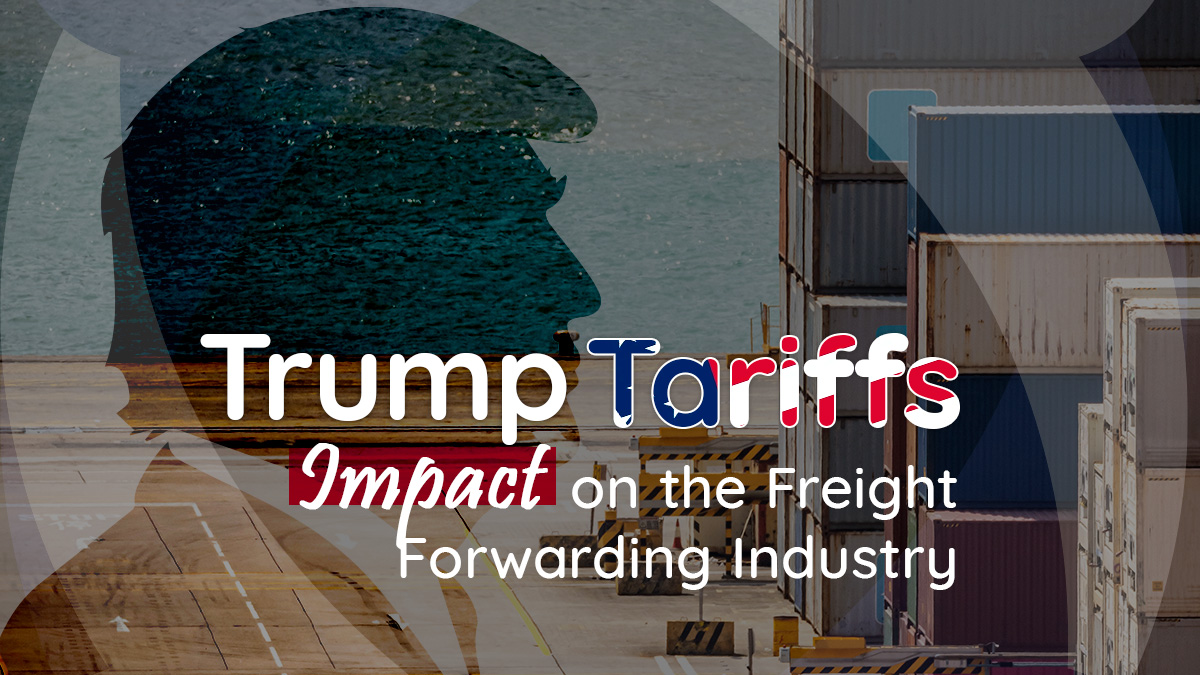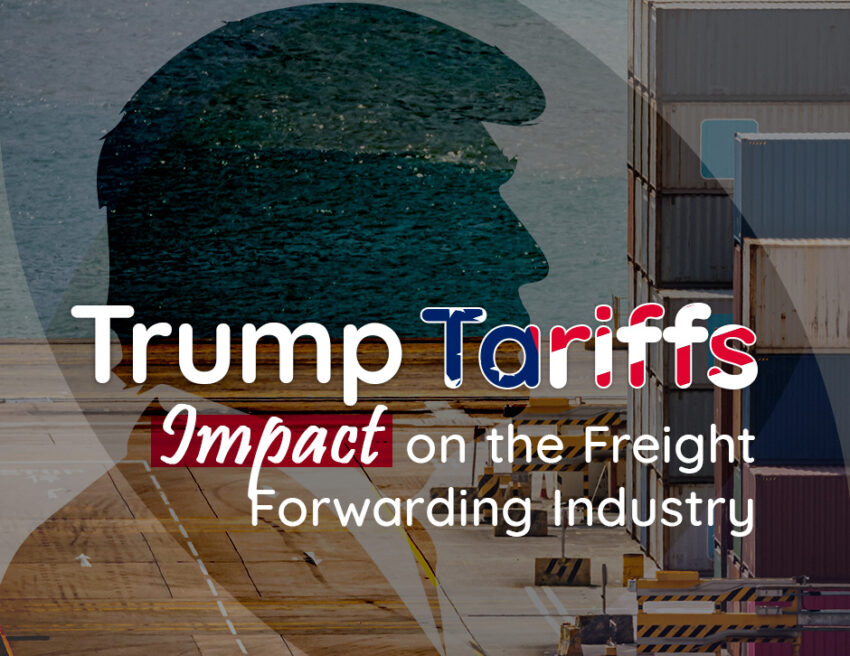The return of Donald Trump to the political stage has reignited discussions about trade policies, particularly the imposition of tariffs on imports from key trading partners. Trump’s tariffs, aimed at protecting domestic industries and reducing trade deficits, have had profound consequences for the freight forwarding industry. These policies have have introduced major shifts in the global supply chains, increased shipping costs, and forced businesses to rethink their logistics strategies. Understanding the ramifications of these tariffs is crucial for freight forwarders and supply chain managers who must navigate the new economic landscape.

The Scope of Trump’s Tariffs
The Trump administration has implemented tariffs ranging from 10% to 25% on imports from countries such as China, Mexico, and Canada. One of the most significant measures includes the suspension of the “de minimis” rule, which previously allowed low-value parcels (typically under $800) to enter the U.S. duty-free. This change has severely impacted e-commerce and fashion businesses that relied on the exemption for low-cost imports.
For instance, fashion retailers and small businesses that sourced products from China now face higher costs and extended customs clearance times. To counter these additional tariffs companies are seeking alternative suppliers or pass the increased costs on to consumers. Freight forwarders play a crucial role in helping businesses adapt by providing logistics solutions that minimize cost increases and optimize trade routes.
Rising Shipping Costs and Delays
One of the immediate effects of Trump’s tariffs has been a sharp increase in shipping costs. Companies that import goods from tariff-affected countries now face higher expenses, leading to inflated prices for consumers. Additionally, supply chain disruptions caused by tariffs have resulted in delays at major ports, as companies struggle with increased customs documentation and clearance requirements.
A notable example is Ansell, a manufacturer of medical gloves and protective gear, which has reported higher logistics costs due to tariffs on Chinese imports. To mitigate these expenses, Ansell has diversified its supply chain, shifting some of its production to Sri Lanka and relying more on air freight, which is faster but significantly more expensive than ocean shipping. Such strategic adjustments illustrate how companies are modifying their logistics operations to cope with the evolving trade environment.
Disruptions to Trade Routes
Trump’s tariffs have also altered traditional trade routes, with businesses seeking alternative shipping strategies to circumvent higher duties. Many companies are moving their supply chains to Southeast Asia, Latin America, and even domestic production to avoid hefty tariffs. This shift is particularly evident in the manufacturing sector, where companies that previously relied on Chinese suppliers are now sourcing from Vietnam, India, and Mexico.
Freight forwarders have had to adapt by exploring new trade corridors, identifying cost-effective shipping solutions, and managing increased demand for customs brokerage services. Ports that were once primary entry points for Chinese imports, such as Los Angeles and Long Beach, have seen fluctuations in cargo volumes as businesses adjust to new sourcing strategies. This redistribution of trade flows has created both challenges and opportunities for logistics providers looking to expand their services in emerging markets.
The Impact on E-Commerce and Small Businesses
The suspension of the de minimis rule has been particularly damaging to the e-commerce sector. Online retailers that depend on international suppliers for low-cost goods have experienced a sudden increase in import costs, affecting their pricing strategies and profit margins. With customs duties now applicable to a wider range of imported goods, smaller businesses that lack the resources to absorb these costs face the risk of being priced out of the market.
For freight forwarders specializing in e-commerce logistics, this change has led to a surge in demand for warehousing, customs clearance expertise, and innovative supply chain solutions. Businesses are now seeking freight partners who can help them consolidate shipments, optimize inventory management, and navigate the complex customs landscape to remain competitive in the evolving trade climate.
Strategic Adaptations by Freight Forwarders
To stay ahead in an increasingly protectionist trade environment, freight forwarders have adopted several strategic measures. One key approach has been supply chain diversification. By identifying alternative sourcing regions, businesses can reduce their dependence on tariff-impacted countries and mitigate risks associated with sudden policy changes. Companies are also exploring nearshoring, moving production closer to end markets to cut transportation costs and avoid import duties.
Another crucial adaptation has been investment in logistics technology. Advanced supply chain management software, real-time tracking, and predictive analytics have become essential tools for optimizing shipping routes, managing inventory, and reducing transit times. Freight forwarders that leverage technology to enhance supply chain visibility and efficiency are better positioned to navigate the disruptions caused by tariffs.
Long-Term Industry Implications
The long-term effects of Trump’s tariffs on the freight forwarding industry extend beyond immediate cost increases and trade route adjustments. Over time, sustained tariffs could lead to a permanent realignment of global trade networks. Countries that were previously secondary players in manufacturing and logistics may emerge as key hubs, while traditional trade routes could shift to accommodate new sourcing patterns.
Consumer behavior is also expected to change as a result of these tariffs. With higher import costs, businesses may pass expenses onto customers, leading to increased prices for everyday goods. This shift could encourage consumers to prioritize domestically produced items, further influencing supply chain dynamics. Freight forwarders that anticipate these changes and align their services accordingly will have a competitive advantage in the evolving trade landscape.
Conclusion
Trump’s tariffs have introduced significant challenges for the freight forwarding industry, affecting shipping costs, trade routes, and supply chain strategies. However, by adopting proactive measures such as supply chain diversification, nearshoring, and technological investments, logistics providers can navigate these disruptions effectively. As the trade landscape continues to evolve, flexibility and strategic planning will be essential for freight forwarders looking to thrive in an increasingly protectionist global economy.
While tariffs may pose short-term obstacles, they also present opportunities for innovation and market expansion. Freight forwarders that embrace change and adapt to new trade policies will be well-positioned to support businesses in overcoming logistical challenges and capitalizing on emerging opportunities in international commerce.


